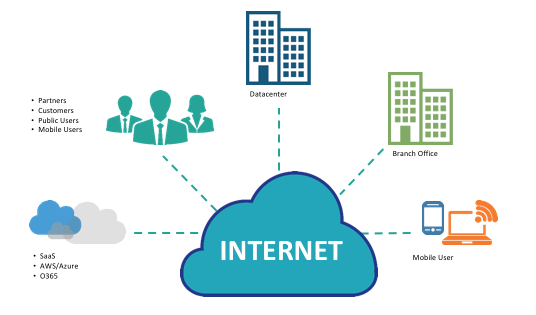5 Questions MPLS Providers Hope You Won’t Ask
For 20 years, MPLS has been the enterprise answer to providing the organization with stable and reliable connectivity. Today, MPLS providers still serve a $30 billion+ market. However, though a lot has changed with the enterprise WAN over the past two decades, it seems not much has changed with MPLS.
MPLS was designed to provide a stable, predictable, and reliable connection from one site to another. But it was not designed to address the needs of today’s enterprise WAN and the type of connectivity expected to to deliver applications to users worldwide.
The massive adoption of enterprise cloud services is revolutionizing how businesses use the WAN. Since access to mission-critical cloud services and SaaS applications is primarily the public Internet, speed and performance takes a hit. And MPLS cannot help.
If you’re considering connecting your branch office to your headquarters via MPLS, here are some questions you should ask potential service providers before you do:
1. Why is MPLS so much more expensive than alternatives?

What MPLS providers will say: Over the life of the contract, MPLS will pay for itself. It’s hard to put a price on productivity.
What they won’t admit: Their argument overlooks the fact that MPLS is no longer cost-competitive with emerging SD-WAN solutions. Moreover, MPLS comes with additional costs.
For starters, you’ll typically be locked into a three-year contract.
Next, since MPLS is so expensive, most organizations need to invest in WAN Optimization hardware, which must be deployed at each site and managed by your IT team.
2. How long will it take to deploy?

What MPLS providers will say: Here’s our implementation guide, which will walk you through a week-by-week timeline.
What they won’t admit: Okay, we should leave it right there. The fact that they have multi-page deployment and implementation guides should be enough to scare you away from this outdated approach.
MPLS can take weeks or months to deploy. In some remote international locations, it can take over a year.
3. Do I need WAN Optimization hardware to go along with this service?

What MPLS providers will say: No, but many organizations prefer to optimize their MPLS connections.
What they won’t admit: Most organizations find that WAN Optimization is absolutely required. MPLS is expensive – really expensive, especially for overseas connections. Unfortunately, in our Internet-saturated world, MPLS dumb pipes fill up quickly. WAN Optimization is required to conserve bandwidth, overcome congestion, speed up file transfers, accelerate application delivery, and more.
Note, however, that most SD-WAN is not a perfect fix, as you must deploy, pay for, manage, and maintain WAN Optimization hardware separately at each location. In response to those shortcomings, there are alternatives, such as Aryaka global SD-WAN, that solve these issues more completely.
4. What about last-mile issues?

What MPLS providers will say: The last mile is the place where our competitors fail. They can’t provide you with an end-to-end connection.
What they won’t admit: While that was true several years ago, it’s not the case now and hasn’t been for some time.
In most of the world, the last mile is not a major problem. The last mile is fairly good in most places and continues to improve. What isn’t improving is the middle mile, which is congested and not designed to support modern enterprise-class applications. MPLS will help you overcome the middle-mile problems, but you’ll pay a steep price to do so.
5. With the shift to cloud, SaaS, and mobile, isn’t MPLS now an outdated technology?

What MPLS providers will say: Well, you’ll never get fired for buying AT&T (or Verizon or BT or whatever MPLS incumbent you’re talking to)! Plenty of Fortune 500 business rely on MPLS, day in and day out, to connect their knowledge workers to centralized resources.
What they won’t admit: MPLS is a near 20-year-old platform, and a lot has changed with the enterprise WAN. Back then, mission-critical applications were not in the cloud, and users were not accessing corporate apps from mobile devices.
MPLS was a good fit for yesterday’s challenges. Today? Not so much. Today’s knowledge-based, cloud-fueled, global, and mobile enterprises need a solution that is application-agnostic, quick to deploy, affordable to own, and easy to manage.
Learn more about the better alternatives to MPLS. Discover what Aryaka’s global SD-WAN can do for your business.
